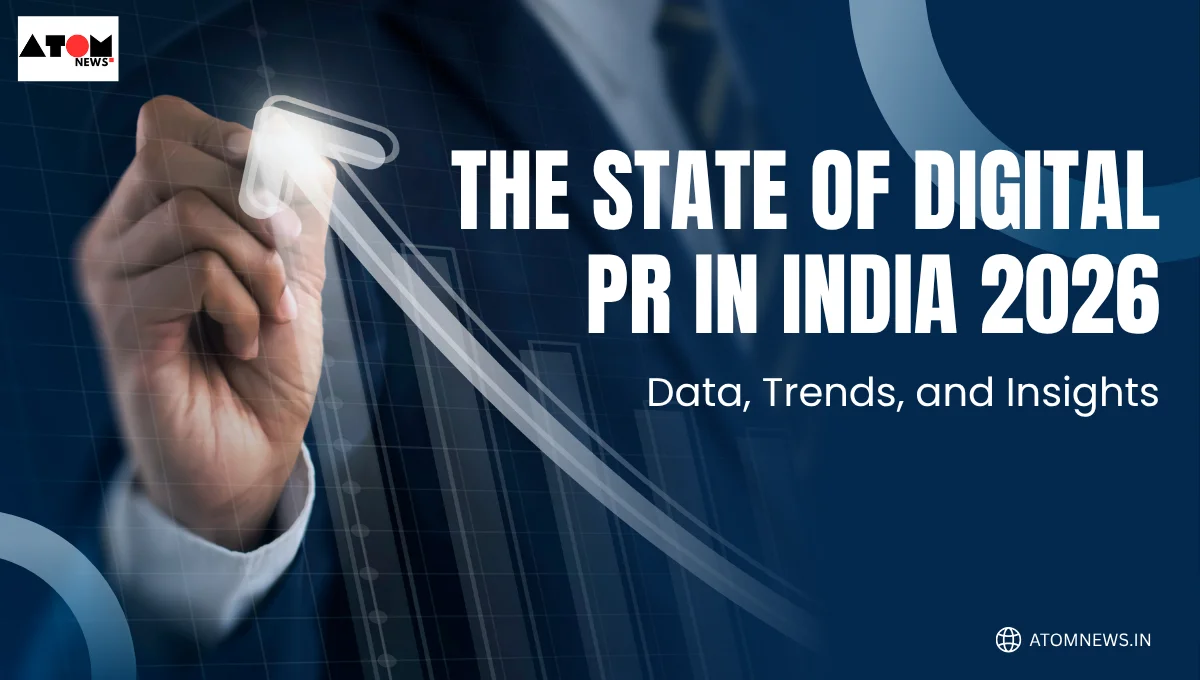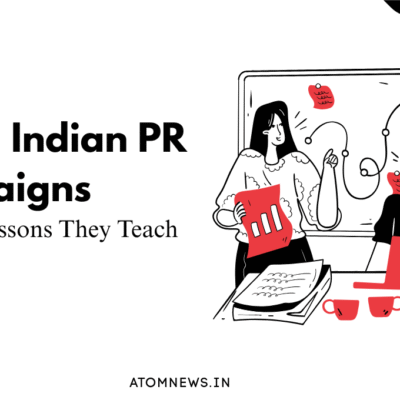The Public Relations industry in India is undergoing a significant transformation. With digital consumption rising across both urban and regional markets, PR has evolved into an integrated function combining earned media, creator partnerships, social storytelling, analytics and technology. As brands prepare for 2026, the sector’s pace of change presents both opportunities and challenges.
1. Market Overview: Growth, Scale and Digital Adoption
India’s PR industry continues to expand steadily:
- Industry size reached ₹2,500 crore in FY 2023 with 19% YoY growth
- A decade-long CAGR of 12.8%, outpacing global averages
- 806 million internet users and 491 million active social-media identities as of early 2025
Insight: PR is no longer defined by press outreach alone. Digital-first narratives, analytics and creator ecosystems now shape how brands build credibility and reach.
2. Emerging Trends Shaping Digital PR in 2026
a) Data-Driven Communication
Brands expect measurable outcomes. PR campaigns are now evaluated through metrics such as engagement, sentiment, share of voice, traffic and conversions.
b) Creator and Influencer Integration
Creators have become a core part of communication strategies. Partnerships with micro, nano and regional influencers help brands achieve authentic engagement, especially in non-metro markets.
c) Social Media as a Primary PR Platform
Instagram, YouTube, LinkedIn and regional platforms now work as independent media ecosystems. Short-form videos, live formats and platform-native storytelling are central to digital visibility.
d) AI and Automation in PR
AI tools support media monitoring, trend analysis, content generation and crisis detection. Automation improves efficiency but raises concerns around authenticity, accuracy and ethics.
e) Hyperlocal and Multilingual Storytelling
Brands are adopting multilingual content strategies tailored for regional cultures and Tier-2/3 audiences, reflecting India’s linguistic and cultural diversity.
f) Growing Focus on Purpose, Impact and ESG
Purpose-led communication, sustainability reporting and transparency are now essential as consumers expect brands to articulate values and long-term social impact.
3. Key Challenges for the Sector
- Measurement gaps: Difficulties in tying PR efforts directly to business outcomes
- Skill shortages: Demand for data, content and tech skills is rising
- Attention fatigue: Audiences are consuming more but engaging less
- Misinformation risks: AI-generated content increases credibility concerns
- Limited integration: PR still operates separately from performance and marketing functions in many organisations
4. What to Expect in 2026 and Beyond
- Higher budgets for digital-first PR and influencer-powered storytelling
- Greater reliance on real-time monitoring for crisis and trend responses
- Community-led creator ecosystems replacing one-off campaigns
- Hybrid models blending earned, owned and social media
- Trust, transparency and consistency becoming core differentiators
5. Recommendations for PR Teams and Brands
- Align content with short-form, video and platform-native formats
- Define KPIs such as sentiment, engagement and share of voice at the planning stage
- Prioritise regional and multilingual narratives
- Build cross-functional collaboration with marketing, content and analytics teams
- Use AI responsibly and establish verification workflows
The Bottom Line
The Public Relations industry in India is undergoing a significant transformation. With digital consumption rising across both urban and regional markets, PR has evolved into an integrated function combining earned media, creator partnerships, social storytelling, analytics and technology. As brands prepare for 2026, the sector’s pace of change presents both opportunities and challenges.
1. Market Overview: Growth, Scale and Digital Adoption
India’s PR industry continues to expand steadily:
- Industry size reached ₹2,500 crore in FY 2023 with 19% YoY growth
- A decade-long CAGR of 12.8%, outpacing global averages
- 806 million internet users and 491 million active social-media identities as of early 2025
Insight: PR is no longer defined by press outreach alone. Digital-first narratives, analytics and creator ecosystems now shape how brands build credibility and reach.
2. Emerging Trends Shaping Digital PR in 2026
a) Data-Driven Communication
Brands expect measurable outcomes. PR campaigns are now evaluated through metrics such as engagement, sentiment, share of voice, traffic and conversions.
b) Creator and Influencer Integration
Creators have become a core part of communication strategies. Partnerships with micro, nano and regional influencers help brands achieve authentic engagement, especially in non-metro markets.
c) Social Media as a Primary PR Platform
Instagram, YouTube, LinkedIn and regional platforms now work as independent media ecosystems. Short-form videos, live formats and platform-native storytelling are central to digital visibility.
d) AI and Automation in PR
AI tools support media monitoring, trend analysis, content generation and crisis detection. Automation improves efficiency but raises concerns around authenticity, accuracy and ethics.
e) Hyperlocal and Multilingual Storytelling
Brands are adopting multilingual content strategies tailored for regional cultures and Tier-2/3 audiences, reflecting India’s linguistic and cultural diversity.
f) Growing Focus on Purpose, Impact and ESG
Purpose-led communication, sustainability reporting and transparency are now essential as consumers expect brands to articulate values and long-term social impact.
3. Key Challenges for the Sector
- Measurement gaps: Difficulties in tying PR efforts directly to business outcomes
- Skill shortages: Demand for data, content and tech skills is rising
- Attention fatigue: Audiences are consuming more but engaging less
- Misinformation risks: AI-generated content increases credibility concerns
- Limited integration: PR still operates separately from performance and marketing functions in many organisations
4. What to Expect in 2026 and Beyond
- Higher budgets for digital-first PR and influencer-powered storytelling
- Greater reliance on real-time monitoring for crisis and trend responses
- Community-led creator ecosystems replacing one-off campaigns
- Hybrid models blending earned, owned and social media
- Trust, transparency and consistency becoming core differentiators
5. Recommendations for PR Teams and Brands
- Align content with short-form, video and platform-native formats
- Define KPIs such as sentiment, engagement and share of voice at the planning stage
- Prioritise regional and multilingual narratives
- Build cross-functional collaboration with marketing, content and analytics teams
- Use AI responsibly and establish verification workflows
The Bottom Line
Digital PR in India is entering a phase defined by data, regional relevance, creators and continuous engagement. As the landscape accelerates, brands that invest in measurable outcomes, cultural insight and transparent communication will be better equipped to navigate—and lead—the evolving digital narrative in 2026 and the years ahead.





